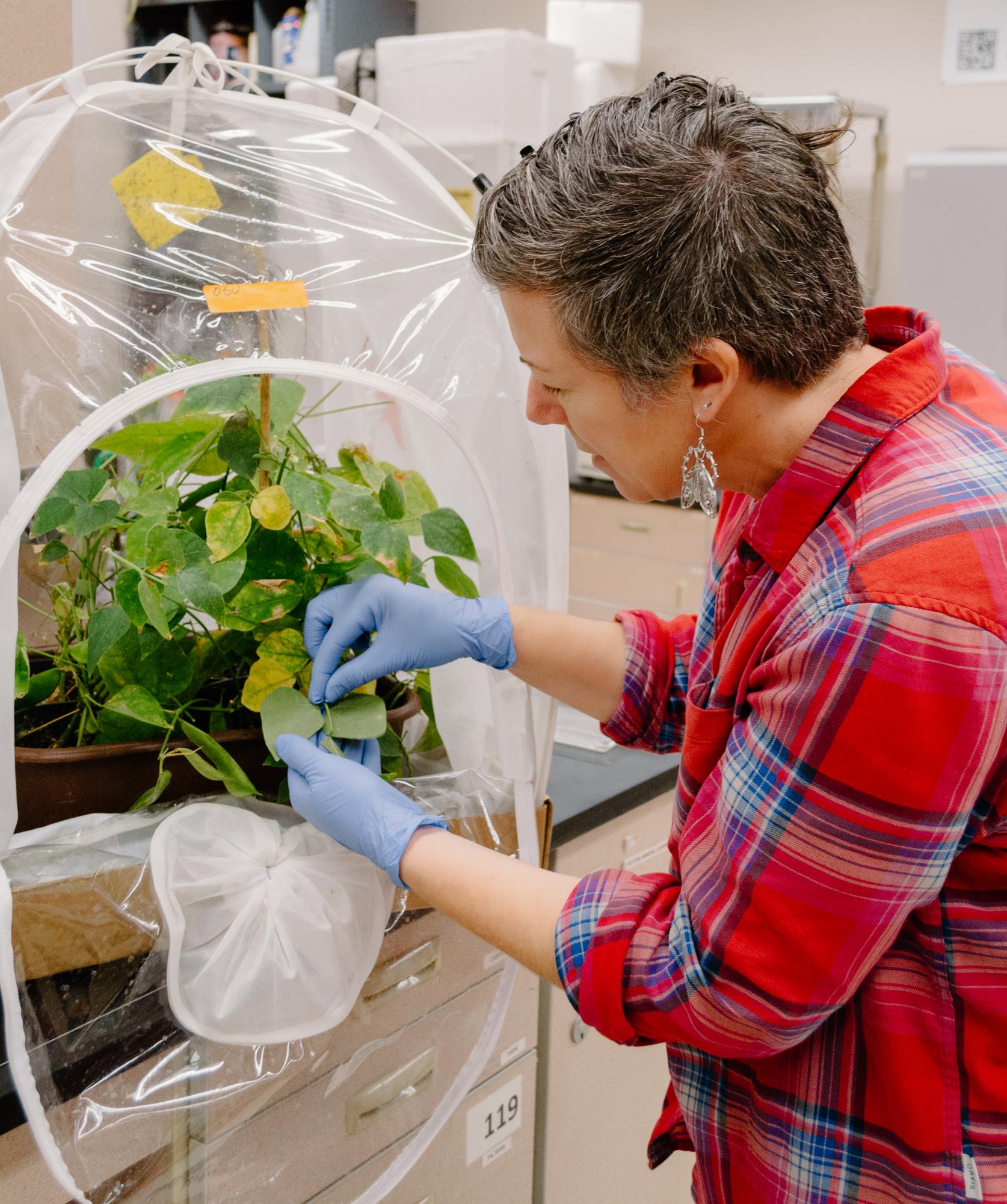In 2021, the United States Environmental Protection Agency issued a rule revoking all tolerances of chlorpyrifos due to its potential for harm. The pesticide is associated with potential neurodevelopmental effects in children.
Researchers at Oregon State University Extension Service have identified alternatives to chlorpyrifos, a banned pesticide that was used in more than 40 specialty crops in Oregon.
While the revocation of chlorpyrifos tolerances affects many foods and commercial livestock uses, it does not affect uses such as in tobacco, golf course turfs, ornamental uses such as christmas trees and others, as listed by the EPA.
According to the Agency for Toxic Substances and Disease Registry, a federal public health agency within the United States Department of Health and Human Services, breathing in air where chlorpyrifos has recently been sprayed can produce headaches, blurred vision, confusion and more.
With exposure to high levels, it can cause symptoms such as severe muscle tremors, loss of consciousness and death. While it may be a possible human carcinogen, according to the ATSDR, the ability of chlorpyrifos to cause cancer remains unknown.
In practice, chlorpyrifos was used as an effective and relatively inexpensive pesticide. According to Navneet Kaur, assistant professor and extension entomologist, the agricultural industry has relied on chlorpyrifos for years, and with no alternative chemistries, the ban left a gap for effective pest management.
According to the EPA, chlorpyrifos has been in use since 1965.
Soon after the ban, OSU’s Extension Service received $162,794 from the Oregon Department of Agriculture for evaluating alternative pesticides to chlorpyrifos.
Kaur was responsible for conducting field trials to identify alternative options for managing insect pests in grass seed crops in western Oregon, identifying priority pest issues with the most urgent need for alternatives and more.
According to Kaur, while researchers have identified some alternative products that are comparable to chlorpyrifos in their pest control efficacy, they are also more expensive than the pesticide.
Kaur said these pesticides were relatively safer with modes of action specific to pest species and softer on beneficials. Kaur was also able to identify unique modes of action from the viewpoint of insecticide resistance management.
“The research into non-chemical control takes more time to validate results and attract funding,” Kaur said. “Sometimes finding funding to continue the research in specialty crops systems can be challenging.”
According to Kaur, opportunities were created to hire students to help with field work and lab studies. Further research will also continue, as Kaur mentioned trials planned for 2024 and beyond.
Stuart Reitz, director of the Malheur Experiment Station, was tasked with looking at alternatives for eastern Oregon onion production to manage onion maggots and seedcorn maggots which feed on the roots of developing onions, causing them to die or become severely stunted.
According to Reitz, the research showed that most of the alternatives were as good or better than chlorpyrifos when pest pressure is low.
Pesticides such as spinosad based products are priced more than chlorpyrifos, while others such as pyrethroid based products are comparable in cost, Reitz said.
In terms of the safety of the pesticides, Reitz said that any experimental pesticides they worked with go through an extensive vetting process before getting used in field trials, while the registered insecticides all met EPA’s registration standards.
“These registered pesticides include spinosad and zeta-cypermethrin. While researchers are using pesticides such as spinosad for uses they are already registered with, they are also using pesticides such as zeta-cypermethrin for a new use other than their registered use,” Reitz said.
For experimental pesticides, no pricing is available until they get to market, according to Reitz.
“Cost is one aspect to selecting a pesticide, but it is also important to consider value of that pesticide,” Reitz said.
According to the EPA, pesticides are evaluated by looking at the potential risk to human health and the environment, including endangered species. After concluding that a pesticide will not cause unreasonable harm to humans or the environment, it is registered for use.
There are multiple laws that affect pesticide use, including the Federal Insecticide, Fungicide and Rodenticide Act, which requires all pesticides sold or distributed in the U.S. to be registered by the EPA.
Reitz said that while the EPA handles pesticide registrations at the federal level, each state can place further restrictions on the use of a pesticide.
With old pesticides being removed by regulations and others unused because pests may develop resistance to them, Reitz said that this type of research is critical for crops and pesticides.
“It takes years to develop new pesticides and assess how best to use them,” Reitz said. “The caveat is that there is no guarantee that new pesticides will be available.”
Pesticides are reviewed every 15 years as part of the Food Quality and Protection Act.
“To be clear, we are not discovering insecticides. Rather we are evaluating materials that are known to have insecticidal properties for particular insect pest uses,” Reitz said.














































































































